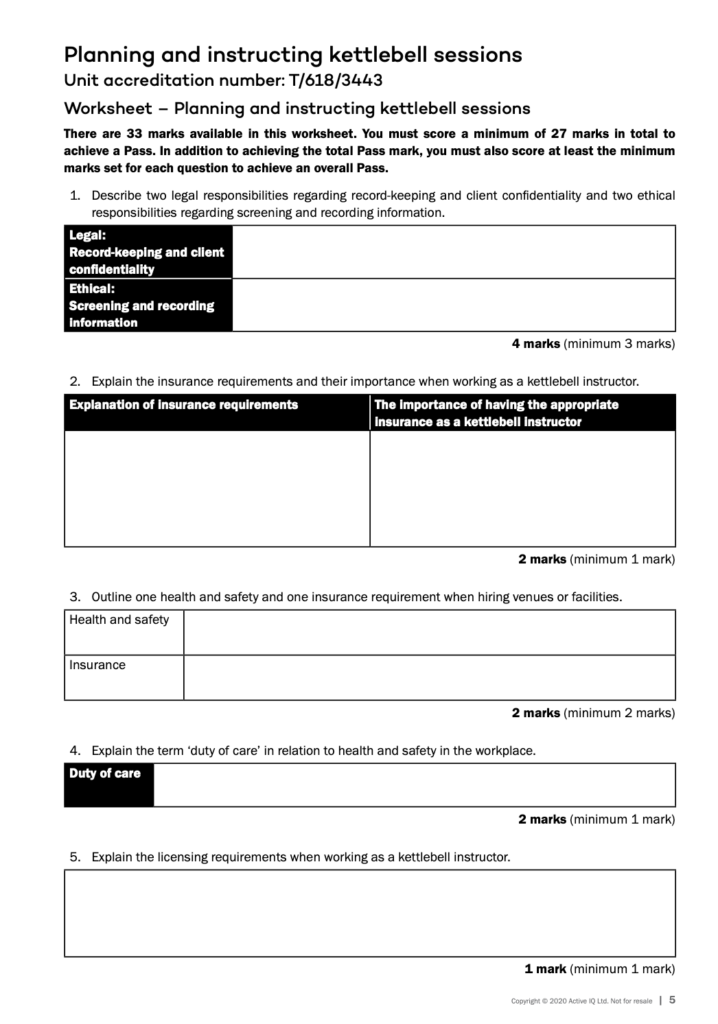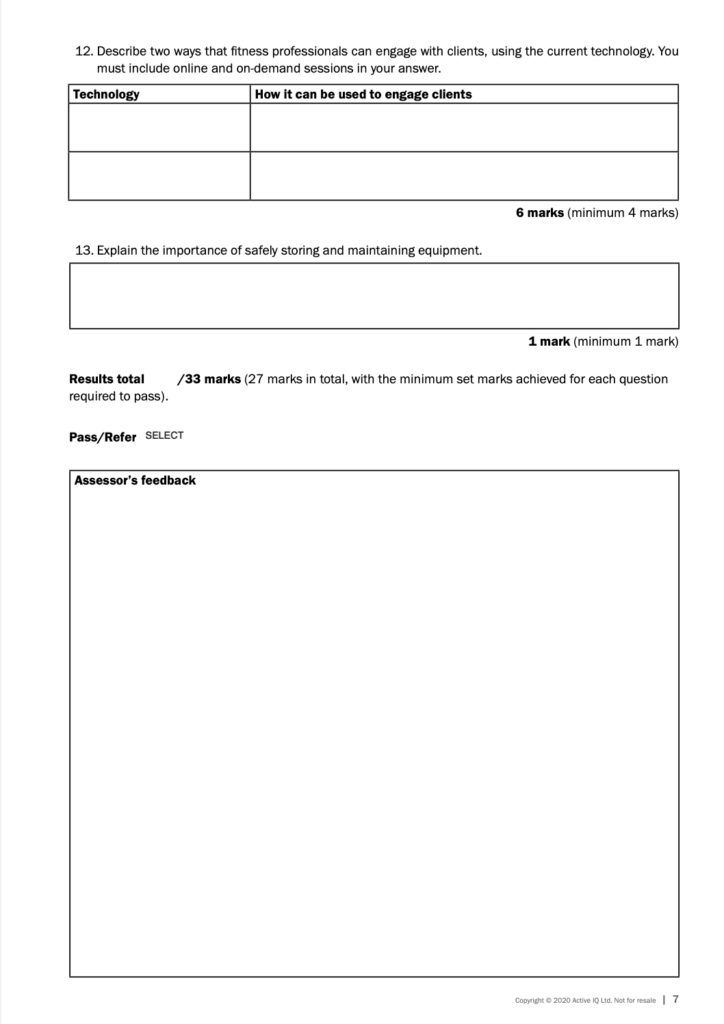Planning and instructing kettlebell sessions
-
Legal and Ethical Responsibilities:
- Understand data protection laws for client confidentiality.
- Know the importance of informed consent and secure data handling.
- Resources: ICO website, GDPR training materials.
-
Insurance Requirements:
- Learn about professional indemnity and public liability insurance.
- Recognise insurance’s role in protecting against injury claims.
- Resources: Insurance providers, fitness professional associations.
-
Health and Safety Requirements:
- Identify a key health and safety consideration for kettlebell training.
- Determine an insurance requirement specific to kettlebell instruction.
- Resources: HSE guidelines, venue hire policies.
-
Duty of Care:
- Define ‘duty of care’ in the context of physical training.
- Emphasise the importance of safe practice in every session.
- Resources: HSE website, professional conduct standards.
-
Licensing Requirements:
- Check for necessary music or performance licences.
- Confirm the qualifications or certifications needed.
- Resources: Local government websites, certification bodies.
-
Structure of a Kettlebell:
- Describe the physical components of a kettlebell.
- Explain how the design affects its use.
- Resources: Equipment manufacturer’s guides.
-
Benefits of Kettlebell Training:
- List two key benefits, like improved strength and flexibility.
- Cite research or articles supporting these benefits.
- Resources: Fitness journals, kettlebell training studies.
-
Kettlebell as a Functional Training Tool:
- Explain how kettlebell training can enhance daily movement patterns.
- Discuss the versatility of kettlebells in training.
- Resources: Functional training tutorials, sports science articles.
-
Physiological Adaptations:
- Identify two changes the body undergoes with regular kettlebell training.
- Resources: Sports physiology textbooks, accredited training courses.
-
Technology in Kettlebell Training:
- Suggest two types of technology to track and increase activity levels.
- Resources: Reviews of fitness tracking devices, industry tech updates.
- Technology for Client Motivation:
- Explain how technology can aid in goal setting and achievement.
- Resources: Motivational psychology resources, app user manuals.
- Engaging Clients with Technology:
- Describe two ways to integrate technology into client engagement.
- Must include online and on-demand session examples.
- Resources: Online engagement strategies, fitness marketing blogs.
- Equipment Storage and Maintenance:
- Discuss the importance of proper kettlebell storage and upkeep.
- Resources: Equipment maintenance guides, safety manuals.
For each point, ensure to provide comprehensive answers backed by the suggested resources. This will help you achieve the required marks on the worksheet.





